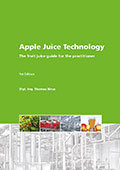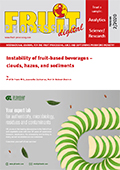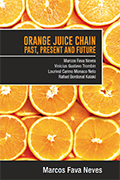Explore key generational differences within the global food and beverage industry
The food and beverage industry is constantly evolving, driven by a complex interplay of factors like technology, sustainability, and individual preferences. But one of the most significant influences on consumer behaviour is generational splits. From financial concerns to health priorities, and the growing importance of sustainability, here Innova Market Insights unveil the key drivers behind each generation’s place in the market. It will also explore how these differences translate into specific product preferences, and overall consumption patterns.
Generational profiles
Generation Z trends research indicates that the generation is characterized by their low household disposable income, lack of work experience, and single status. They are in the exploration stage of their careers, highly invested in physical exercise, and prioritise skin health and energy stamina. While they are socially active and enjoy mingling in various locations, digital platforms are essential for their connection and entertainment.
Millennials have more disposable income due to increased expertise and authority at work and are often living with two people’s paychecks. They prioritise exercise and healthy food choices, focusing on heart health and stamina. Similar to Gen Z, they are concerned about stress and anxiety, and prefer socialising at home. However, they are more experienced with technology than Gen Z.
Generation X are characterised by their high income, with many reaching career plateaus. They are physically active and emphasise bone and joint health for healthy aging. Their satisfaction levels are similar to Millennials, with anxiety being a shared concern. They prefer socialising at home and are experienced with technology.
Boomers have a medium income and are often retired with steady income sources like pensions. They prioritise food and are the most concerned about aging. Memory and agility are key concerns, and they prefer socializing at home. While they are digitally acquainted, they are less reliant on technology than younger generations.
Megatrends and generation trends
Key shifts in consumer behaviour across generations are partly driven by global megatrends, including factors like inflation, health concerns, and sustainability.
While inflation and financial constraints are top of mind for all generations, younger consumers (Gen Z and Millennials) exhibit a more optimistic outlook. Generation Z trends research shows 27 % of Gen Z say that they invest into foods, beverages, and experiences that uplift their mood, while older generations (Gen X and Boomers) are more likely to cut back on expenses and prioritise saving.
Across all generations, there’s a strong emphasis on healthy living, with nutritious diets and physical exercise being key priorities. Eating healthily is the number one eating-related value for all generations, chosen by 43 % of consumers, even over affordability. Gen Z is particularly focused on mental health, with stress and anxiety being major concerns. Millennials prioritise energy and stamina, while Gen X focuses on heart health. Boomers, on the other hand, are most concerned with memory and agility, reflecting their age-related concerns.
Sustainability is a growing concern for all generations, with different generations demonstrating more attentiveness to specific types of environmental consciousness. Younger generations are more likely to choose products with low environmental impact, and support brands that advocate for social causes. However, older generations are more prone to minimise their food waste, avoid overconsumption, and prioritise choosing local, seasonal produce.
Health and wellbeing across generations
Generation Z trends research indicates the generation prioritises mental health, with stress and anxiety being their top concerns. They are also highly invested in physical activity and prioritise energy and stamina. Skin health is another significant concern for this generation, reflecting their focus on appearance and self-esteem.
Millennials share similar concerns with Generation Z regarding stress and anxiety, but also place a strong emphasis on heart health and overall stamina. They are motivated to manage their weight for reasons such as enhancing self-esteem and physical appeal, as well as preventing chronic conditions.
Generation X is more satisfied with their mental health compared to younger generations, but they are more concerned about sleep and insomnia. They are also physically active and prioritise bone and joint health, reflecting their focus on healthy aging.
Boomers are the most satisfied with their mental health, but they are concerned about memory and mental agility. They are also highly focused on healthy aging, prioritising bone and joint health, and are motivated to maintain their physical and mental well-being.
Pleasure and enjoyment between generations
Two in five consumers consider freshness as the most important element in enjoying food and beverage products. While this preference is shared across generations, there are some key differences in many other indicators of enjoyment. For instance, seniors prioritise nutrition and realness, while younger generations favour taste discovery and sweetness. Multiple products can be noticed catering to these interests, advertising nutritional, fresh elements, as well as rich, novel flavours.
What’s next in Generation Z trends and beyond?
The distinct generational differences identified through Innova’s consumer trend research can unlock brand opportunities for the future. Gen Z and Millennials are especially concerned with their mental and emotional health. Generation Z trend research shows that the generation tends to invest in food and beverage that uplifts their mood or alleviates boredom. Brands can leverage this through developing products that offer nutrients for mood improvement or exciting sensory experiences to alleviate boredom. Gen Z and Millennials are also keenly aware of their skin health, as it is their top physical concern. Appearance matters to these younger generations, and brands can develop products that tap into these attitudes through promoting skin health related claims on their packaging.
For older generations, their health focus falls on preventing or managing chronic conditions. Functional ingredients in products can help incentivise these consumers in their choices, allowing them to improve their overall health through their diet. Honesty and transparency are also important eating values for seniors, emphasising nutrition and realness as drivers of enjoyment and pleasure in food. Natural and nutritious products will likely continue to be enticing to this demographic.
This article is based on the report, “Generational Differences – Global” by Innova Market Insights.
“Shared Planet” leads Innova Market Insights’ Top Ten Trends, focusing on how everyone can play their part in shaping a sustainable and prosperous future. Consumers tell us they want to be ethically and environmentally conscious, so brands need to work alongside consumers to breed confidence in the claims attached to products. Trust and transparency are must-haves for any brand wishing to find common ground with an increasingly educated, forward-thinking and interconnected consumer base.
A sense of joint responsibility for our shared planet is guiding the choices consumers make and the lifestyles they wish to lead. Innova’s study, conducted across eleven countries, revealed that when it comes to food choices, the top two environmental actions people are taking are reducing waste (43 % of respondents) and eating in moderation (32 %).
“One of the biggest shifts we are seeing is that the health of the planet is now the top concern of consumers,” says Innova’s Global Insights Director Lu Ann Williams. “Personal health has been the big concern for the past few years, but consumers now tell us that this has been surpassed by global issues. Sustainability is no longer just a Wall Street issue. It might not be the top purchase driver for all consumers, but for many it clinches the deal when it comes to choosing between products.”
Elsewhere, concerns over health that have been amplified by a pandemic which has massively changed social habits, the continued advancements in technology, and more confident, vocal consumers, all offer clear signs of the direction innovators must take to successfully meet society’s needs and desires in 2022.
Innova’s Top Ten Trends, based on extensive, top-quality consumer and industry knowledge, provides the best insights for those needing to stay on top of the changing food and beverage landscape. Innova’s continually updated consumer research delves into the ‘what’ and the ‘why’ behind trends in the food and beverage industry, allowing innovators to forward plan with accurate and detailed insight into the main drivers behind consumer behavior. Looking to the future, Innova presents the top trends that will drive innovation and success in 2022:
1. Shared Planet
With planetary concerns now the number one global issue for consumers, brands are moving on from simply proclaiming their credentials to meeting a clear, agreed and understandable measurement of their environmental and social impact. There is a pressing need for companies to work together and with consumers to build trust in claims of zero or negative impact. It is vital to ensure universal acceptance of certifications and greater public faith in the transparency of brand actions. This requires quick, clear, tangible and trusted information combined with a product life story that truly stands up to scrutiny.
2. Plant-Based: The Canvas for Innovation
With personal health and global sustainability proving to be strong drivers of consumer choice, plant-based R&D has refocused from mimicking meat, fish and dairy to optimizing options that stand on their own merits. When asked what reasons consumers have for considering plant-based alternatives, they tell us they consider it healthier and better for the planet. A third reason, the desire for diet variation, is further boosting interest in plant-based beyond the traditional vegan and vegetarian sectors, leading to a 59 % increase in launches of new plant-based products in the year to August 2021. From convenience foods to gastronomy, people are looking for the quality alternatives plant-based products can offer.
3. Tech to Table
Technological advances have created major innovation opportunities for the entire food and beverage industry, offering greater possibilities to change every aspect of a product’s lifecycle from conception to consumption. While innovators embrace new production methods, consumers turn to apps and AI for guidance on personalized nutrition and a greater understanding of how to successfully fulfil their needs. Myths and misunderstandings are crumbling, so it has never been more important to engage in honest and open communication with consumers to ensure their continued trust in the advances of food technology. Respondents to Innova’s Consumer Survey say they are more willing to embrace changes such as new food technologies or sharing data if they can be shown to be beneficial to personal and global health.
4. Shifting Occasions
Lockdowns and the pandemic have reshaped existing eating occasions while at the same time helping to create new ones. Consumers have a greater awareness of the comforts and possibilities of home, so now seek more from going out. Industry leaders will be pushed to better serve evolving consumption occasions, creating products geared to the new expectations of a public whose social habits have been challenged.
5. Voice of the Consumer
Consumers are calling the shots and expecting more engagement from brands through digital and real-world channels. People are looking for food and beverages that align with their political, social and ethical values. If they can’t find them, entrepreneurial consumers are taking action to fill the gap themselves, satisfying specific market niches and co-creating products that meet their needs. Health, authenticity, responsibility and the simple craving for pleasure all combine in Innova Market Insights’ Top Ten Trends for 2022.
In addition to the top five, Innova has identified the following themes that will drive consumer actions in the coming 12 months:
6. Gut Glory
7. Back to the Roots
8. Amplified Experiences
9. Upcycling Redefined
Over the past 10 to 20 years, the ripples of change in the global soft drinks market have threatened to become tidal waves, with new categories emerging constantly and genuine novelty flooding the shelves.
According to a new report from Innova Market Insights, which highlights that in the global shift in soft drinks, juices and carbonates may still be the two most active sub-categories worldwide but growth is clearly much faster in alternative areas. For example, Ready-to-drink (RTD) sports drinks saw launch numbers increase at a CAGR of 26 % over 2014-2018, compared with 12 % CAGR for iced tea and coffee and 10 % CAGR for ‘other’ soft drinks, including novelties such as herbal drinks, jelly drinks and vinegar drinks.
Flavor trends also demonstrate the changing face of the market. The fastest growing flavors in recent years include matcha tea (+49 % CAGR 2013-2018), apple cider vinegar (+21 % CAGR) and kombucha (+21 % CAGR), all of which are thriving concepts from Asia that are now distinguishing themselves on a global platform.
As well as the emergence of new categories, overlap between existing varieties is continuing. ‘Hello Hybrids’, one of Innova’s Top 10 Trends for 2020, is perhaps nowhere as important as in the soft drinks arena. ‘Category definitions are blurring all the time,’ says Lu Ann Williams, Director of Innovation at Innova Market Insights. “For example, in the US, Odwalla has recently developed the Smoobucha, which is a blend of fruit smoothie with fermented kombucha.”
At the same time, as suppliers seek new platforms for success, segmentation is also changing the face of the soft drinks shelves. For example, Water+ is an established concept but is continuing to evolve beyond vitaminization and added energy, with fiber, probiotics, collagen and mood ingredients all finding their way into modern waters.









